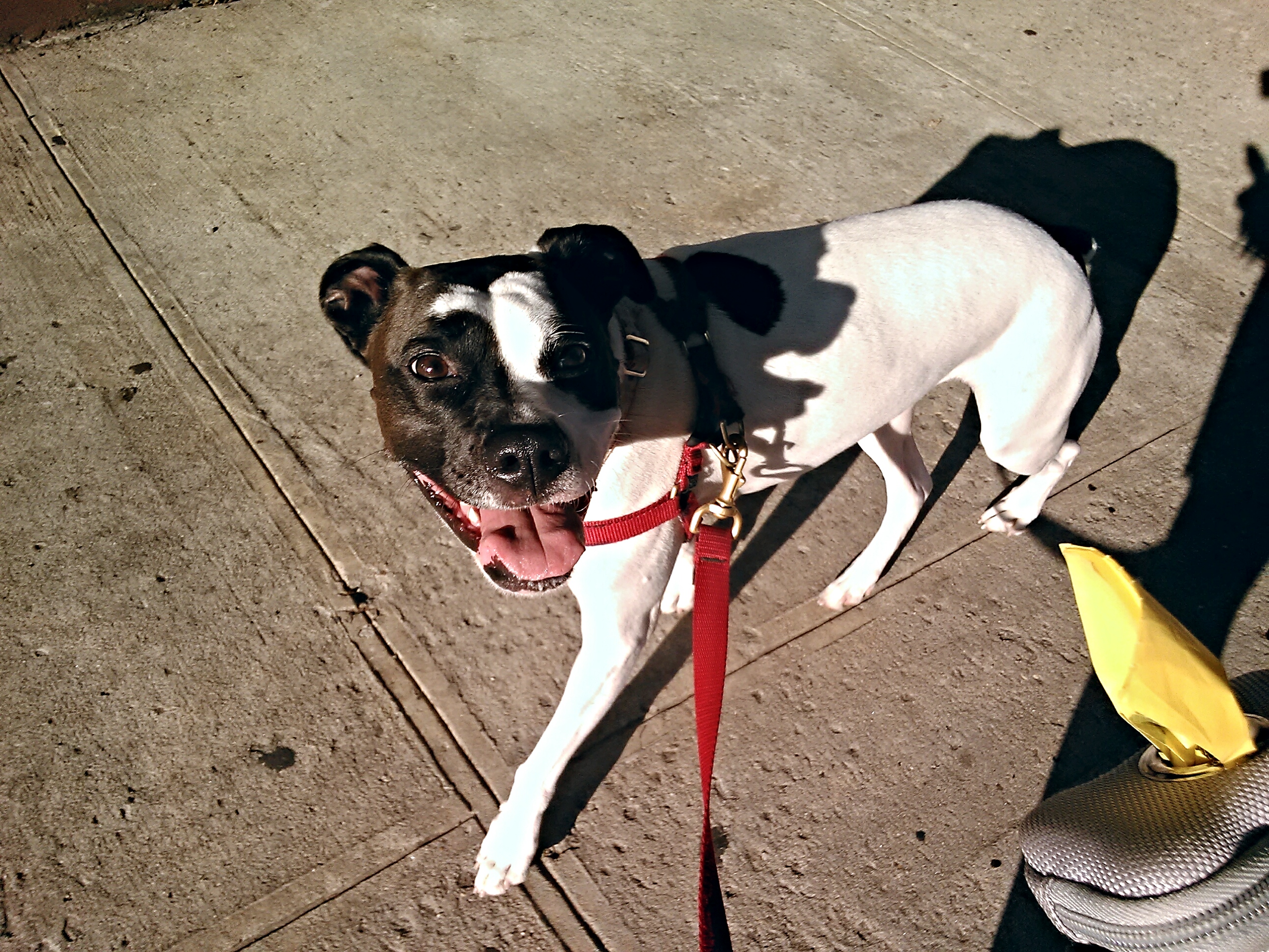
31 Mar How We Cue
It’s no secret dogs have ears like a falcon’s eyes. They hear the unheard, anticipate a rumbling truck, run to the door when they hear your keys jingling in the lock! Sounds play an integral role in many dog’s lives, and we already know how to take advantage of that fact. After all, noise is used as a training tool: clicker training, whistles, and cues!
“Come,” “sit,” “wait,” and the occasional “that’s enough” are all things we say to our dogs. To us the words make sense: we’re speaking our language. But for a dog, learning has to do with repetitive action, recognizable traits, and tones. They learn based on your vocal patterns, intonations, enthusiasm – everything! Even body language speaks worlds.
Time for an experiment!
Take a moment and listen to this:
What do you hear? Nothing. Gibberish. But what do you feel? Upbeat, energized, like you want to kick up your heels and dance! That’s because the language centers of your brain are picking up on the singers’ peppy, high pitched sounds (and the music and bright colors help, of course). Like your brain, your dog’s has two sides, and several different auditory regions. They may not speak our language, but they understand our verbal energy. Now the question is: how can we use our voice to train?
Patterns
Remember when we mentioned patterns? Well, guess what. The pattern of a word, or series of words, is one part of how a dog knows what you’re trying to say.
Have you ever played this game?: Dnot you jsut lvoe dgos?
This is a very visual example, but chances are you could read that. The idea is that the first and last letters of each word are stable–recognizable to our language centers because the pattern remains the same. The rest can be jumbled up!
This study done by The University of Sussex found that so long as you keep the pattern, the cue retains meaning. However, if you change the pattern, the cue loses the ability to foster communication between dog and human. But the Sussex Study wasn’t the first (and probably won’t be the last) to study how human vocalization, and sound affecting dogs. Patricia McConnell, PhD, CAAB found that environmental noise (specifically in shelters, but the idea can be transferred) alters a dog’s ability to recognize what you’re asking. In her Webinar, on page 12, she addresses that your dog’s response “degrades through the environment…”
Noise and distractions can limit how a dog hears your cue! So practice cues in controlled places, and build up to stimuli – check out our post on socialization!
Consistent
Keeping the pattern consistent is one reason why it’s essential to use the same cues when training your pup. Once he understands the pattern, knows what you’re asking, you can then use that cue in different ways. Tone, rate, volume, pitch: these audible cues tell your dog how (or if) to respond to your cue.
Example: Take the same word and say it to yourself in different ways – staccato, high pitched, or maybe short and long. Bet you felt the difference. Patricia McConnell encourages dog owners to “…use [their] voice to best advantage…” (Pg. 17) What she found was that using your voice in short, fast cues encourages your pup to be active and excited, while long, smooth cues will help your pup slow down and calm. An abrupt, short noise tells a dog to stop what he is doing, and give you his attention. But not when it is repeated.
Don’t Hit Repeat
Repeating a word can confuse your dog, or initiate a different response than desired. McConnell’s work has shown that by repeating a cue, your vocalization is telling him to get excited. I’m sure we’ve all had moments where we’ve frantically repeated “No!” or “Ah!” or another variation of an abrupt word. By doing this, you’re conflicting recognizable things. The short, fast cue, versus the abrupt sudden voice.
However, by teaming recognizable patterns with an appropriate tone, talking to your dog takes on a whole new realm. Although dogs can’t communicate through words, human language is just as complicated to them as it is to us. Practicing your cues, and understanding how your vocals are communicating can improve training. But remember, your dog is always listening – to both what and how!




No Comments